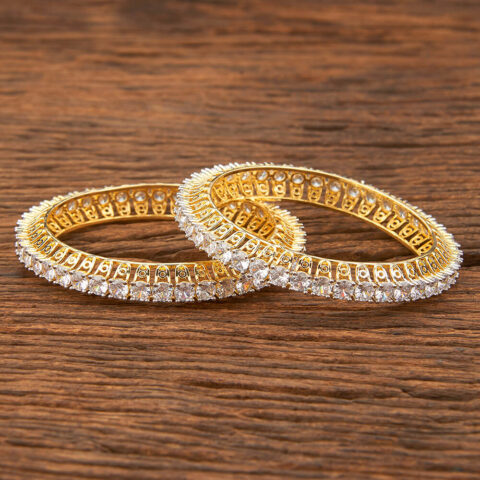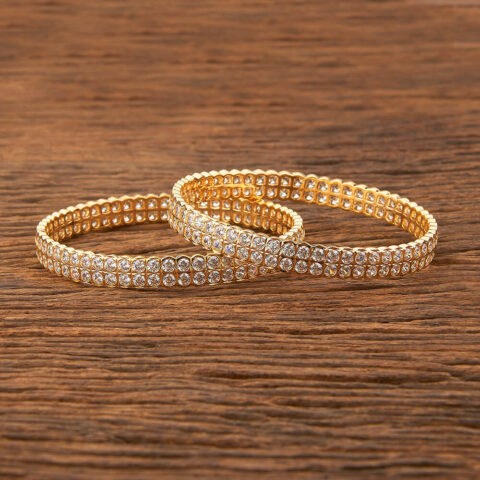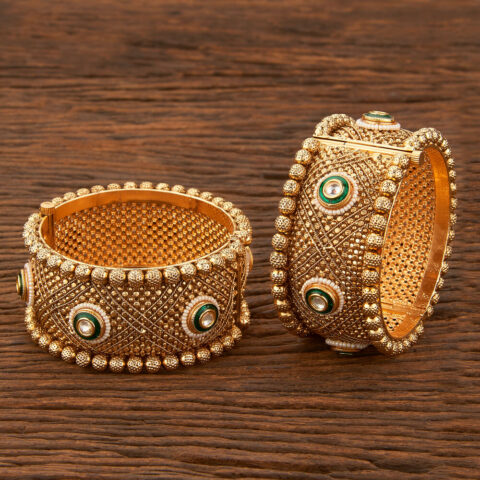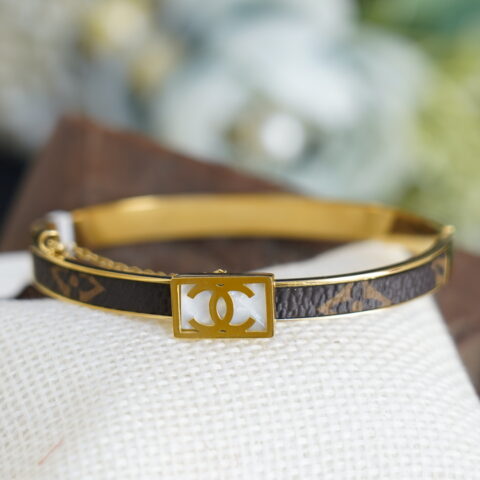
Bangles
- Home
- Bangles







- 1
- 2
The Timeless Charm of Bangles: A Trip in The Past, Culture, and Clothing.
For centuries, bangles have been significant pieces of human jewelry, transcending cultures and generations to remain the world’s beloved accessory. From the ever-thriving Indian Bazaars to Paris’s main and glam am, bangles have a very special direction in the jewelry industry. This article digs into the everlasting magic of bangles to understand their immense history, the growing number of cultural representations, and the changing fashion trends that have changed their usage for decades.
Reading the article, I see that the Bengalis gave Bangles its name since an English sea captain allegedly purchased the area from a wealthy Bengali family.
Bracelets are the types of jewelry people have been using since ancient times, as archaeological evidence goes back to ancient civilizations. The digs from the Indus Valley Civilization, which came into being in 2600 BCE, are where archaeologists unearthed arms made from materials such as shell, copper, bronze, and gold. Such early bangles were not just for ornamenting; they were socio-cultural symbols.
In earlier Egypt, rings were quite popular and were often used as amulets to protect the dead. They were mostly found in the graves of the deceased. The Romans also wore bracelets and covered themselves with lace works with fine patterns reflecting their welfare and rank. Bangles’ look and popularity have made them relevant throughout all the ages and everywhere on the map, meaning that they are global jewelry.
Cultural Significance of Bangles
India: A Symbol of Tradition and Identity
Besides being just the traditional symbolism and ornamental accessory of Indian culture, bangles in India hold remarkable identities and symbols. Bangles have a prominent significance in the marriage of Indian women as they are essential attires in Indian bridal dresses. The jangling of earthenware bangles and crystal bangles grabs the general public’s awareness at each wedding occasion and is considered auspicious, bringing prosperity. It is in diversity where all the styles of each region are different from the others: the lac bangles of Rajasthan from the red and white conch shell bangles of Bengal that make India so unique.
Africa: Manifestations of Traditionalism and Artisanship
Bangles are created with tremendous skill and artistry in Africa, normally using ivory and various types of wood, beads, etc. These bangles, apart from being ornamental, manifest cultural heritage and identity as well. For example, the beadwork adorned by beaded bangles has a significant role in weddings and age-grade graduations among the Maasai tribe in Kenya, which signifies the wearer’s marital status, age, and social ranking.
Western Fashion: The Uniqueness of Putting Together Elegance and Modernity
Bangles in the West have become more than pricey accessories to carry styles; they are dominant fashion trends that go with almost every style. Girls were seen wearing bangles decorated with geometric patterns and precious stones, which provoked the rage for Art Deco from the 1920s to the 1930s. Now, bangles are a favorite amongst women for casual and formal outfits, seen on the wrists of many celebrities and fashion icons.
The Storyline of Bangle in the Fashion Industry.
Traditional to Contemporary Designs
Bracelets have been brilliantly adapted along with the changes in design by transitioning from the traditional handcrafted to the modern styles that suit the current situation, i.e., sales. Old-fashioned bangles usually had a lot of precise carvings and engravers and were with precious gemstones. Modern bangles also have a distinctive repertoire of materials like acrylic, leather, and even recycled ones, which are in use, reflecting the move towards sustainable and eco-friendly fashion.
The Rise of Customization
Highly customizable bangles are another trend that we can currently see. Along with the growing popularity of customization, the era of the consumer with his distinct style appears. Modern Jeweler provides a broad range of services, including creating and personalizing your bangles, choosing materials to your taste, and adding your symbols or letters. Elevating the bangles trend to a new level by channeling them as works of art worn by people spices up the traditional bangles, which have been in existence for a long time.
Bangles in High Fashion
Over the years, high-fashion designers have invaded bangle fashion by featuring them in their new collections and runway shows. Fashion houses like Chanel, Gucci, and Dior are developing bangles in different styles, from minimalistic chic models to lavish masterpieces. Such bangles are often a combination of handcrafted styles and modern designs, thus creating many contemporary as well as classy pieces.
The Future of Bangle
As the fashion cycles ahead, bangles will be among the favorites still holding on to their unchanging glamor and look. Technological and material innovations are bound to lead to new fashion trends using various bangles, which will broaden the outlook of the dimension of what bangles could be. On top of this, environmental consciousness and ethical clothing trends will define how bangles are structured and advertised, concentrating on eco-friendly practices and fair trade.
Conclusion
Bangles are more than just the ornaments; they are a part of social/cultural heritage, identity, and creative expression. This encompasses the lives of all the people, the artists, and the arts. Their journey from ancient civilizations to modern fashion runways is a portrait of endurance and adaptability. These old-school styles of handmade bangles can range from the contemporary to the classic. Many people will continue to be amazed and intrigued by these handcrafted pieces, which they will pass on from generation to generation.











